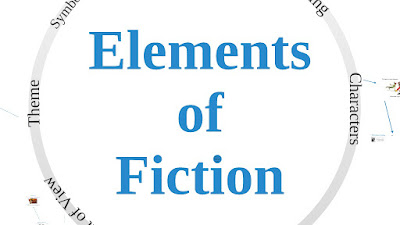
Mastering Exposition in Fiction Writing: The Art of Revealing Without Overwhelming
By Olivia Salter
Exposition, in fiction, refers to the essential background information that helps readers understand the characters, setting, and plot of a story. It includes details like a character's history, the world they live in, or the circumstances that brought them to their present moment. When done well, exposition can enrich a narrative, making it immersive and believable. But poorly handled exposition can bog a story down, turning it into a dull info-dump. The key is to strike a balance, revealing just enough information without overwhelming or distracting the reader.
Why Exposition is Important
1. Contextualization: Exposition provides the context needed for readers to engage with your story. Without understanding the characters’ motivations or the world they inhabit, it becomes difficult for readers to care about what happens next.
2. World-Building: Whether you're writing speculative fiction, historical novels, or even contemporary stories, exposition helps in world-building. It allows you to ground readers in the rules of the world, whether it's filled with magic or the politics of a dystopian society.
3. Character Development: Exposition can be a powerful tool for developing characters. Backstory, for example, sheds light on why a character behaves the way they do, their fears, or their desires. However, weaving this in naturally rather than presenting it all at once can be tricky.
How to Weave Exposition Into Your Story
1. Show, Don’t Tell: One of the most common pieces of writing advice applies especially to exposition. Instead of outright explaining every detail, show them through action, dialogue, or subtext. For example, instead of telling readers that a character is wealthy, show them living in an luxurious mansion, wearing tailored clothing, or casually discussing their stock portfolio.
2. Scatter the Information: Rather than dumping all the exposition in the first chapter or an early scene, gradually reveal information as the story progresses. This maintains a sense of intrigue and keeps the reader engaged. You don’t need to explain everything upfront. Let readers piece together the backstory and world from preceding clues.
3. Use Dialogue Carefully: Dialogue can be a sneaky way to insert exposition, but it needs to feel natural. Avoid characters talking to each other in ways that feel forced or unnatural, such as explaining things they would already know. Instead, try to have information emerge organically from the conversations.
4. Internal Monologue and Flashbacks: For character-driven stories, internal monologues or flashbacks can offer an intimate way to deliver exposition. These techniques work best when intertwined with the character's current struggles, revealing relevant pieces of their history as they process present events.
5. Balance with Action: To avoid long stretches of exposition that could slow your pacing, scatter action and dialogue between moments of background information. This keeps the narrative flow dynamic and helps avoid reader fatigue.
Avoiding Common Exposition Pitfalls
1. Info Dumps: One of the biggest mistakes is overwhelming readers with large chunks of exposition all at once. While you may want to share the full history of your fantasy world or the traumatic backstory of your protagonist, readers don’t need to know everything immediately. Keep the information drip-fed.
2. Unnecessary Exposition: Only include exposition that’s necessary for the story or character development. If a piece of information doesn’t move the plot forward or deepen our understanding of a character, consider leaving it out. Readers often don’t need as much background information as writers think they do.
3. Forgetting Pacing: Exposition can slow down the pacing of a story if not carefully managed. If readers feel they’re slogging through background details and not advancing the plot, they may lose interest. Keep an eye on the balance between exposition and action to ensure that your narrative maintains momentum.
Conclusion
Exposition is an essential tool for enriching a story, creating believable worlds, and deepening characters. The key to mastering it is subtlety—letting readers discover the necessary background details organically, without overwhelming them. By showing rather than telling, scattering information throughout the story, and avoiding info dumps, you can craft a narrative where exposition feels seamless and enhances the overall experience.
Remember, the best exposition serves the story without drawing attention to itself.



.jpg)

